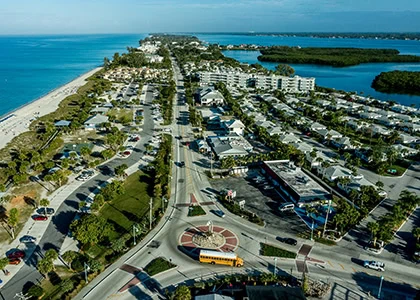Investing in build-to-rent (BTR) properties can offer a viable path to generating stable, long-term returns, especially when traditional real estate markets show volatility. As with any investment, there are inherent risks that you need to navigate to protect your capital and maximize profitability. Understanding the landscape of BTR investments is key; this entails grasping the particular advantages and challenges of this sector. Constructing residences to rent out requires thorough market research, robust financial planning, and strategic tenant management.
To effectively mitigate risks in the BTR space, it’s critical to adopt a proactive approach. This starts with meticulous site selection aimed at identifying locations with high rental demand and growth potential. You need to design properties that align with the preferences and needs of your target demographics. Another pivotal element is implementing efficient operational systems that enhance tenant satisfaction and retention, while simultaneously managing costs.
Incorporating the right strategies can help you sustain profitability in the long run. This involves not just creating a quality product, but also staying ahead of market trends, refining your investment model in response to changing conditions, and focusing on the elements that drive value for renters. Keeping a close eye on economic indicators and regulatory changes can further guide your decisions, ensuring that your BTR investments remain sound and lucrative.
Understanding the Build-to-Rent Market
To capitalize on build-to-rent (BTR) investments, it’s vital you understand the market’s key components. Knowledge of market conditions and location demographics is essential for a successful investment.
Assessing Market Conditions
Market Research: Initiate your investment journey by examining current BTR market trends and predictions. Look into aspects such as rental yield growth and demand shifts, which are indicative of potential profitability.
Financial Analysis: Thorough financial analysis helps to forecast returns and identify risks. Consider operational costs and set realistic expectations for your cash flow based on market performance.
Evaluating Location and Demographics
Location Analysis: Your investment’s success relies heavily on its location. Preferable areas usually feature strong job growth, transportation access, and community amenities that attract tenants.
Demographic Trends: Understand your potential tenants. Examine age distribution, income levels, and lifestyle preferences to ensure the area’s population aligns with the type of BTR properties you’re considering investing in. This knowledge is key for long-term tenant retention and steady income.
Risk Management Strategies
Effective risk management in build-to-rent investments requires strategic planning and due diligence in several areas to ensure sustained profitability. Here, you’ll discover specific strategies to secure your investments against potential risks.
Financial Planning and Analysis
Your financial foundation is critical for weathering market fluctuations. It is crucial to conduct a detailed cash flow analysis to project your revenue and expenses accurately. You should also set aside a reserve fund for unexpected costs to avoid financial strain.
Diversification of Investment Portfolio
To protect your investments from market-specific risks, consider diversifying your portfolio across different geographical locations and property types. A mixed portfolio can reduce the impact of a downturn in any single market and create a balance between high-risk and stable, long-term assets.
Legal Compliance and Due Diligence
Ensure you are fully aware of the legal requirements for build-to-rent properties. You should conduct comprehensive due diligence checks on every aspect of your investment, from land acquisition to construction, and adhere to all zoning, building codes, and rental laws. Engaging with legal experts familiar with real estate can provide essential guidance and help avoid costly legal disputes.

